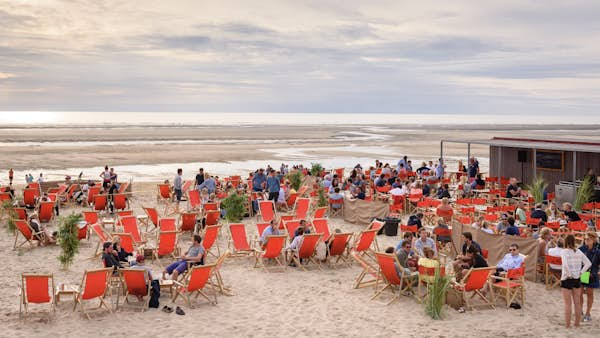Northern France’s counterpart to the famed Côte d’Azur, one insanely scenic stretch of coast has it all.
We’re talking vintage glitz and glamor, spectacular natural beauty and gloriously golden sand beaches in spades. So enchanted was French painter Édouard Lévêque by this coastline’s iridescent light and ever-changing palette of hues that in 1911 he nicknamed it the “Côte d’Opale” (Opal Coast). The gem of a name stuck.
Since the Côte d’Opale is in le Nord (the north), the fickle weather will affect any visitor’s impressions – including of the spectacular kaleidoscope of greens, grays, sea blues and soft pinks that unfurls for 120km (75 miles), from France’s border with Belgium to the Baie de Somme. On clear sunny days, vistas of dazzling white-chalk cliffs, rolling sand dunes, pine forests and swathes of sand as far as the eye can see are pure gold. Unlike along the Mediterranean, the ebb and flow of tides on the windswept Côte d’Opale only heightens the big-screen drama. (Grab a tide timetable at local tourist office to help get on top of it all.)
Hiking or biking from cliff to cliff, building sandcastles on beaches beloved by British vacationers since the Victorian era, forest bathing amid aromatic pines, soaking up WWII history along evocative remnants of the Atlantic Wall…the Côte d’Opale in the Hauts-de-France region suits all ages, moods and budgets. And stomachs, too: think artisan beer, quintessential French frites showered in brown vinegar and shoals of irresistible salt-kissed seafood. Bon appétit.
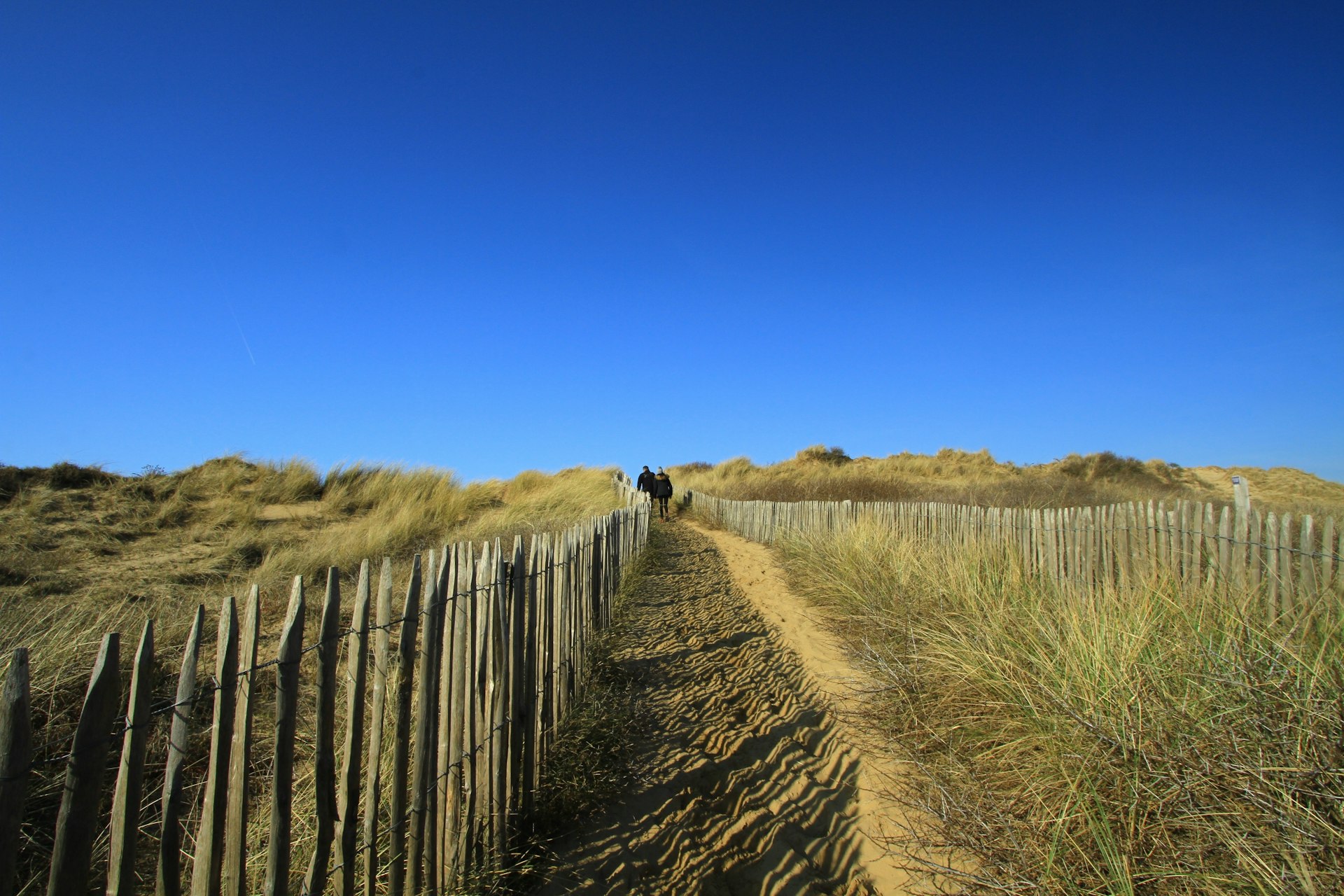
When should I go to the Côte d’Opale?
For beach bums, July and August – the warmest, busiest months – are best. In between sun-spangled sea dips, water sports, beach games and picnics on the sand, little beats a paper-wrapped portion of double-fried frites on a bench or between vintage wooden beach huts with a view of the English Channel. Ditto for a finger-licking frites refuel after an exhilarating windsurfing, kitesurfing or char à voile (sand sailing, or sand yachting) session on one of the coast’s numerous swathes of seemingly endless sand.
In celebrity seaside towns like Boulogne-sur-Mer and Le Touquet, the official beach season runs from Easter to mid-October; after winter hibernation, bars on the sand and emblematic beach huts burst into life in early April. On Le Touquet’s Paris-Plage – wildly popular with well-to-do Parisians in the 1920s, hence its name – lifeguards patrol marked swimming zones from late June to the end of August. The town’s open-air markets bloom two-to-three times weekly between April and September.
Accommodation rates drop in October, April and May, and tumble to a bargain-basement winter low from November to March (when many seaside hotels and restaurants shut for the season). Beaches and walking trails empty out, casting an entirely new, soul-piercing light on this beautiful coastline. For serious gourmets, there is no finer time to savor dedicated fish markets in Boulogne-sur-Mer, Étaples and Dunkirk than November to May: prime scallop season.
Spring (March to May) is the season for spotters, when millions of migrating birds – bar-tailed godwits, gray plovers, chaffinches and many others – descend upon the cliffs of Cap Gris-Nez and Cap Blanc-Nez. In winter, bookend merlin and woodcock watching with solitary walks on wonderfully serene beaches.
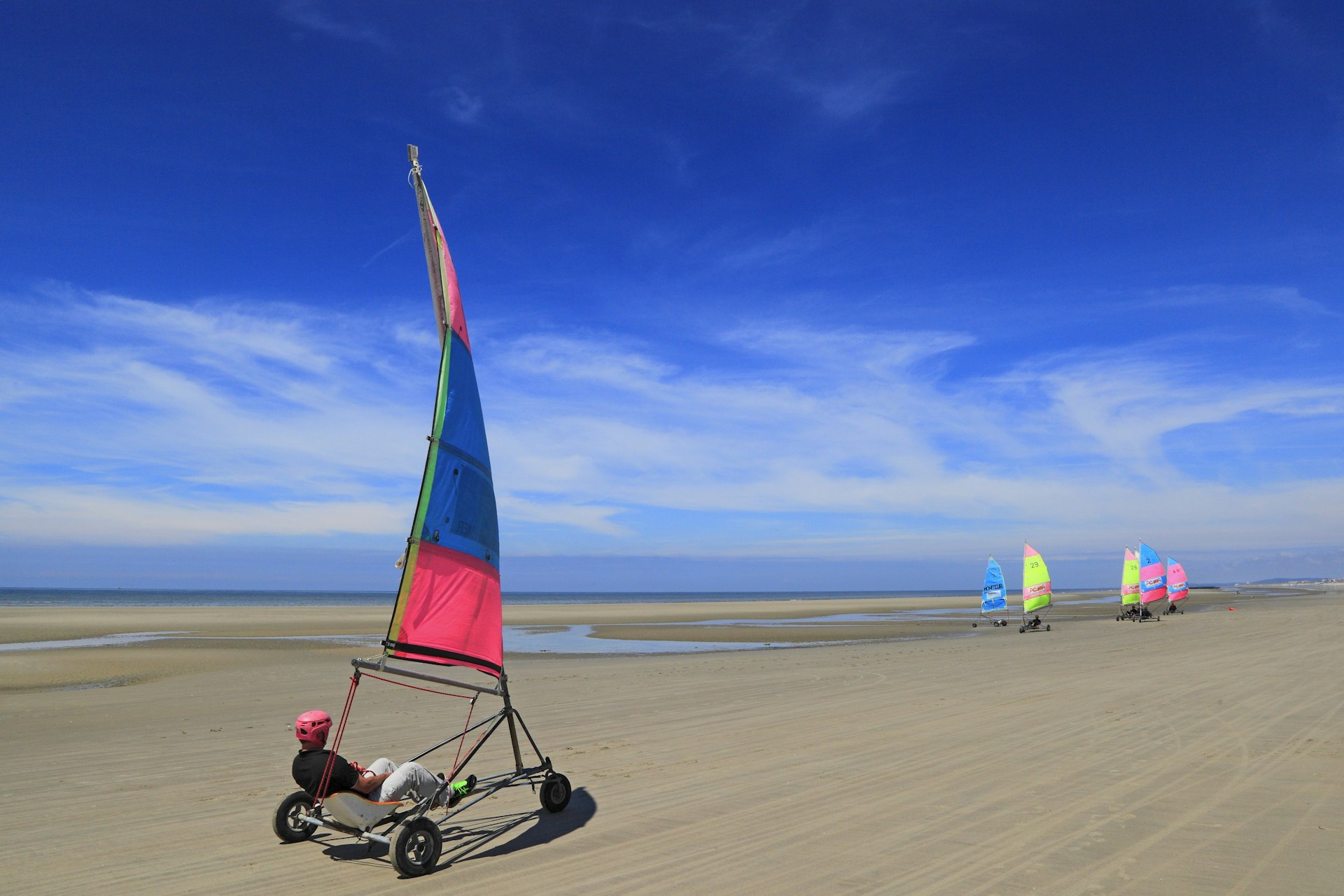
How long do I need to spend on the Côte d’Opale?
“Just a weekend” is never enough. Spend one day exploring the coast’s emblematic twin set of wild and blustery capes, Cap Blanc-Nez and Cap Gris-Nez. Devote day two to your pick of fashionable seaside resorts and their street markets, chic boutiques, tasty drinking and dining, and (naturellement) beaches. Le Touquet is for Parisians and wannabes; Boulogne-sur-Mer and Berck-sur-Mer (bring your kite!) are for families; and Neufchâtel-Hardelot welcomes those into wild and windy water sports.
If (more like when) rain hits, one of Europe’s largest aquariums entertains in Boulogne-sur-Mer with California sea lions, South American caimans and 60,000-odd other mesmerizing sea creatures. You can also connect the dots between defensive fortifications, artillery emplacements and massive reinforced-concrete bunkers built by the Nazis along the coast here during WWII; the on-the-ground history lesson merits one full day at least.
If you have a couple more days to spare, linger in Calais to ride its beautiful dragon along the revamped seafront, scale its lighthouse and town-hall belfry, and enjoy a bracing coastal stroll from Plage de Calais, Blériot-Plage and Plage de Wissant. Even another day? Try your hand at char à voile – the emblematic sport of this wind-whipped region, which sees dry-land sailors zip across sand flats in kart-like yachts on wheels. Budget €45 for a two-hour initiation session with Les Drakkars on Hardelot-Plage, a 3km (1.8-mile) long beach 16km (10 miles) south of Boulogne-sur-Mer that has old-school candy-striped beach huts and a nearby château. Bring a light waterproof jacket, sneakers and gloves.
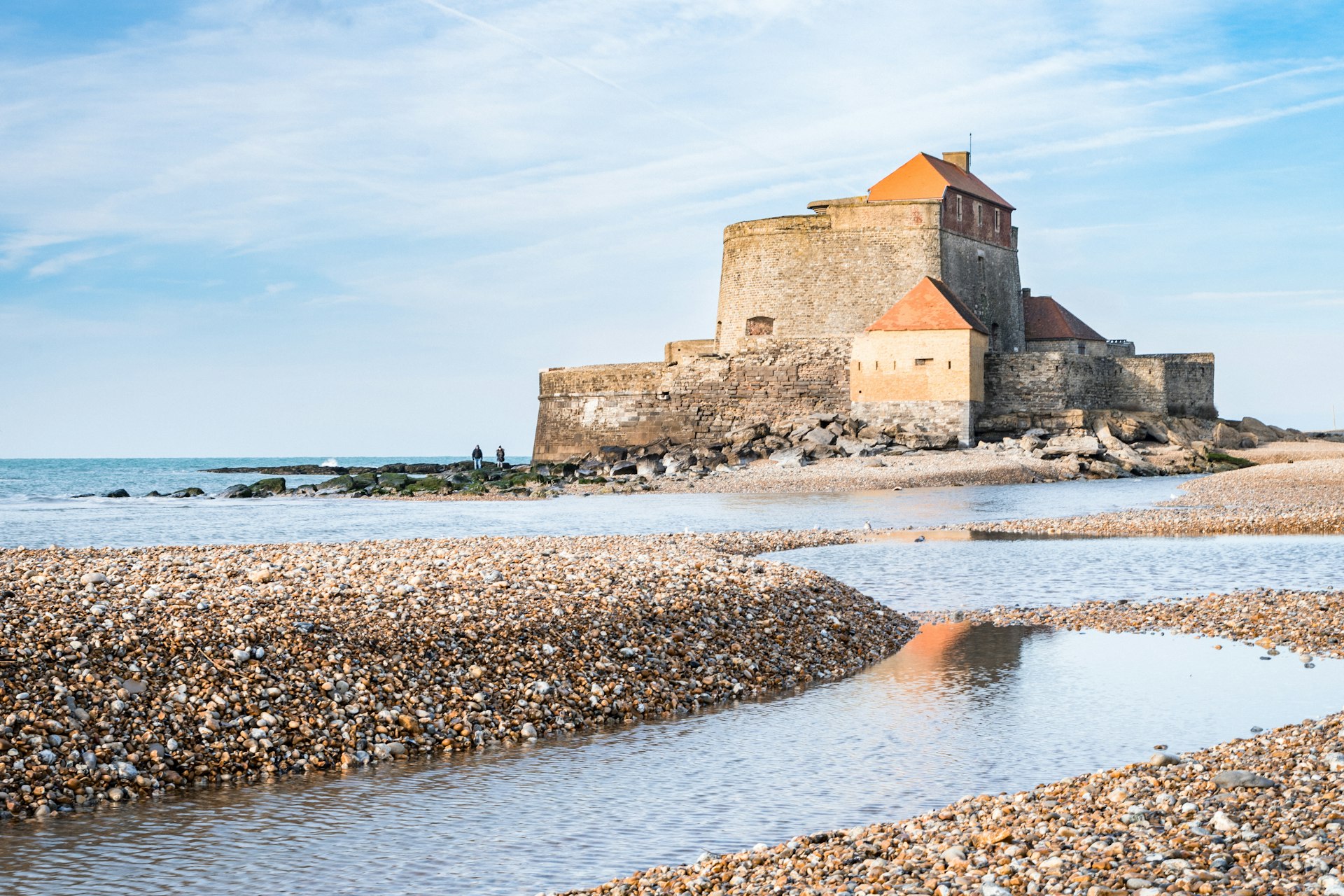
Is it easy to get in and around the Côte d’Opale?
Paris Charles de Gaulle and Paris Orly are the closest airports, linked by public transport to Paris’ Gare du Nord train station, from which Calais-bound trains depart. Count two hours by high-speed TGV to Calais-Fréthun, the out-of-town TGV train station linked to the center by local bus or train (10 minutes, €2.50); and three hours from Paris by regional TER train to Calais Ville station. From the latter, there are regular trains along the coast to Boulogne-sur-Mer, Dunkirk and Étaples–Le Touquet, 6km (3.8 miles) east of Le Touquet town.
Cross-Channel ferries from Dover, England take 35 minutes to sail to Calais’ in-town ferry port. Motorists arriving by car-train from Folkestone through the Eurotunnel disembark some 6.5km (4 miles) southwest of Calais town center.
Towns and seaside resorts are small, easily walkable and eminently bike friendly – and it’s easy to rent wheels. Ample local buses traverse the northern Côte d’Opale, between Calais and Boulogne-sur-Mer; check schedules, plot itineraries and buy tickets on Hauts-de-France’s Pass Pass platform. Further south, your own car is the most convenient option for scenic coast road-tripping.
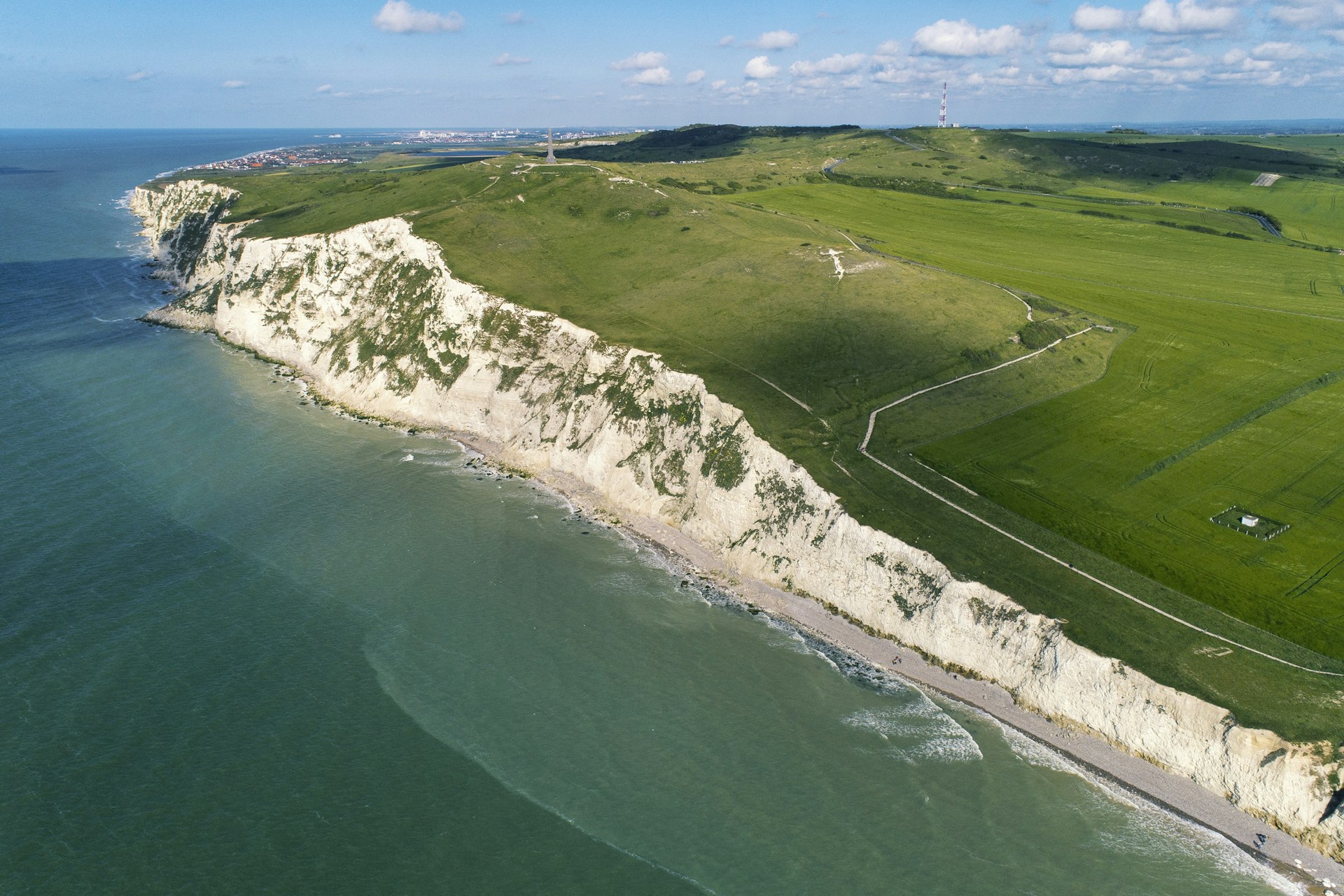
Top things to do on the Côte d’Opale
Dover’s white cliffs on the Kentish coast are an English icon – and their French counterparts, formed 160 to 70 million years ago across the Channel, are equally inspiring. Rising 134m (440ft) and 50m (164ft) above the sea respectively, the white Cretaceous cliffs of Cap Blanc-Nez (“White Nose Cape”) and older, silvery gray Jurassic cliffs of Cap Gris-Nez (“Grey Nose Cape”) are the Côte d’Opale’s big attraction – literally.
Park in the free car park just past Sangatte on the D940, a 15-minute drive southwest of Calais, and take your pick of walking trails: spot seals on sand flats below and a flush of birdlife overhead. Seasoned hikers can tackle the GR120 hiking trail taking in the complete stretch of coast (14 miles / 23km) between the two capes; pick up maps and trail info at the Maison du Site des Deux Caps in Audinghen.
Not a walker? Clambering up Cap Gris-Nez’s 19th-century lighthouse; around Vauban’s 17th-century, wave-splashed Fort d’Ambleteuse (weekends only, from April until mid-November); or across scrub-stitched dunes by mountain bike or e-bike are equally soul-stirring. And after your activities, of course, comes lunch. Pick up a cheese-forward picnic at Calais’ morning market, or enjoy frites washed down with a local 2 Caps beer at L’Abri Côtier in Audresselles. Or go big, with crab donuts (!!), fish soup, a dozen oysters or even a lobster, perhaps – all with sea view to die for – at family-run La Sirène, which has served customers on the beachfront at Plage du Cap Gris-Nez since 1967.
WWII hardware, including a massive, rail-borne German artillery piece with a range of 86km (53 miles), is displayed at the Musée de Mur de l’Atlantique, dramatically housed in a colossal German pillbox near the Maison du Site des Deux Caps tourist office. Pair this museum – a must for WWII history buffs – with an unsettling stroll around the massive concrete bunker Blockhaus d’Éperlecques, constructed by the Nazis deep in a forest in 1943 as a base to assemble and launch V2 rockets towards England.
Even more WWII history awaits in Dunkirk (the name means “church of the dunes”), which was heavily bombed then rebuilt after the war. Don’t leave without a cornet of fries whipped up with a smile by father-son duo Malika and Julien at Chic Frite – a chip shop voted France and Belgium’s meilleure friterie (best chippie) in 2023.
Beach fashionistas seeking French style on the sand won’t do better than historic seaside town of Le Touquet, with its Eiffel Tower sculpture overlooking it prized beach and high-rolling 1920s casino (now a congress center) that inspired Ian Fleming’s fictional Royale-les-Eaux in his 007 novel Casino Royale. Peruse the boutiques on main drag Rue St-Jean, drool over shellfish and fresh produce in the historic Marché Couvert (covered market) and hobnob between beach huts on Paris-Plage. In cooler weather, ditch languid beach days for bike rides through aromatic pine groves in Forêt du Touquet and along the Baie de Somme’s scenic Voie Verte (greenway); Bike 4 You and La Baleine Royale rent any model you’d need.
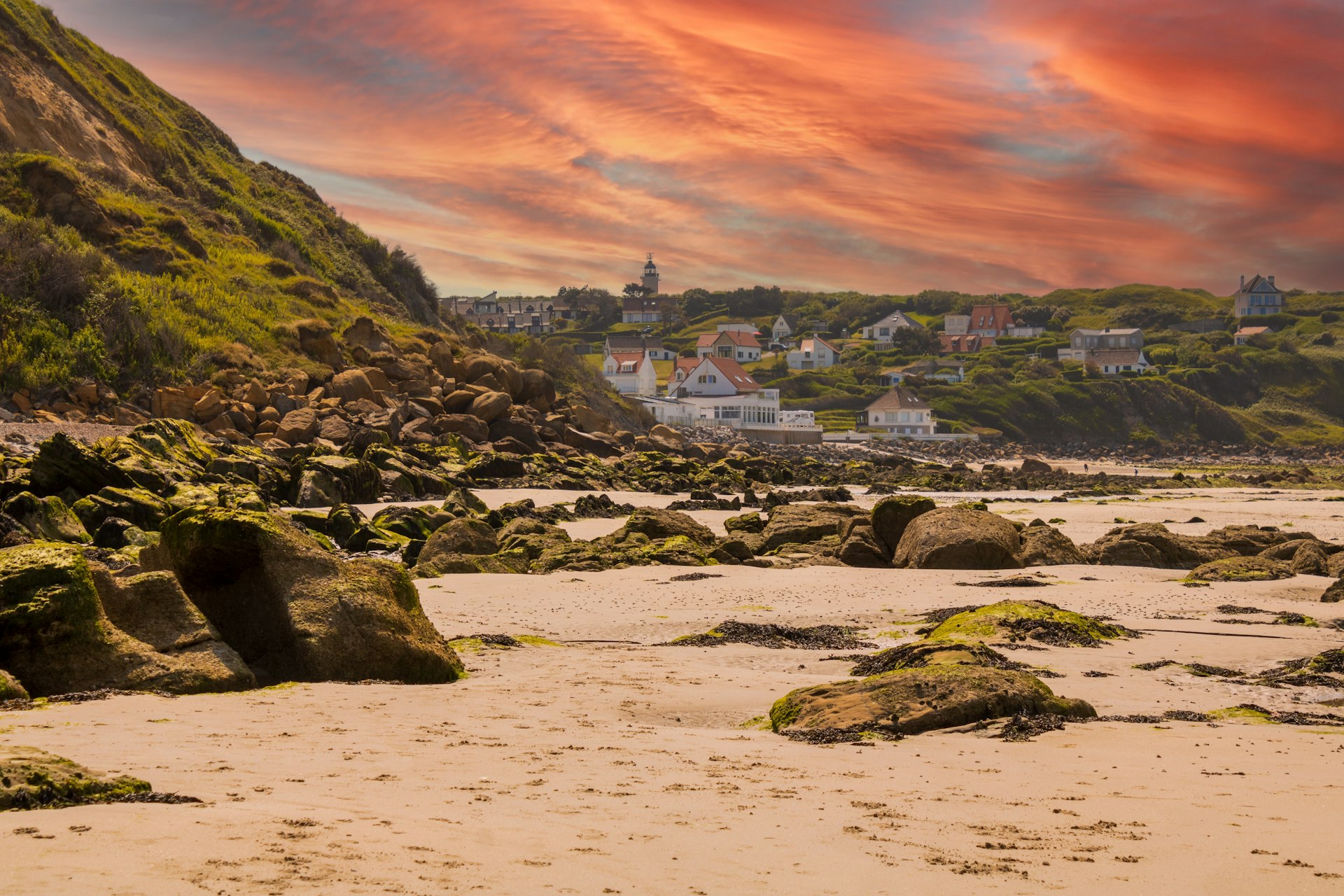
How much money do I need for the Côte d’Opale?
Upmarket Le Touquet is famous for its high prices, on par with those in the French capital. To get more bang for your buck, stay in cheaper accommodations inland, and visit coastal hotspots as day trips. Aim for the shoulder or low seasons when rates tumble.
- Beach hut for season (May–September): €550
- Sun bed and parasol: €8/16 half/full day
- Takeaway frites (fries) by the beach: €3
- 33cl bottle of beer in a bar: €7–9
- Cappuccino in Le Touquet cafe: €5
- Regular/electric bike rental: €16/32 a day
- Bus ticket: €1.60/3.30 single trip/day pass
- Double room in mid-range hotel: €100–250
Keep planning your trip to France:
France is a big country. Read how to get from place to place
The best ways to experience France with kids
All you need to know before your trip to France
Tips for exploring France on a budget

